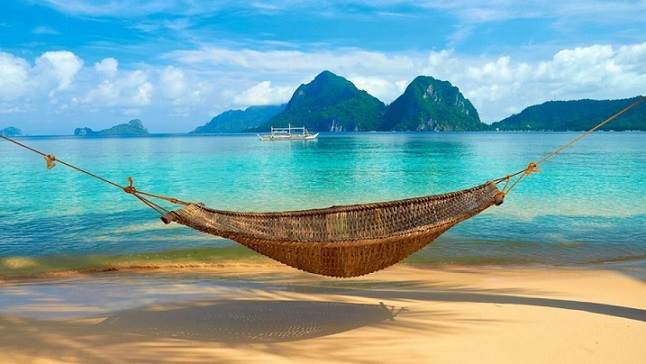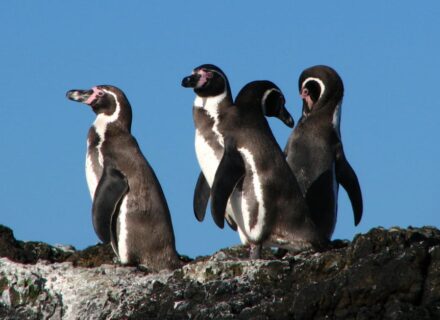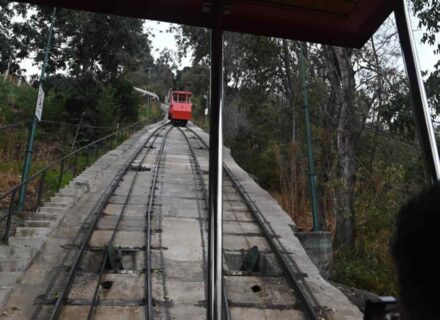The Philippines is a fascinating destination that would satisfy anyone from the least intrepid traveler to the most intrepid traveler and has enough to keep even the most picky one happy for a lifetime. The Philippines is made up of a mind boggling 7,641 islands and 36,289km of coastline. There is teeming biodiversity, cosmopolitan cities, tropical forests, majestic mountains, a rich unique culture and a delicious range of cuisine to try. However, if you are traveling to the Philippines for the first time it can be difficult to know where to start. Much of the wealth of online information takes a lot of time to wade through so guess what! I did all the hard work for you.
In this article I aim to answer the first and foremost questions you may have about traveling to the Philippines for the first time and I will direct you to specific websites where you can find more detailed (helpful) information about each general topic.
When Is The Best Time To Visit The Philippines?
The Philippines has a tropical environment and the islands are located on the pacific, volcanic “ring of fire”. Across the country there are variations in the climate, however, in general the best months to visit are from December to April. During these months the weather is warm and dry.
This makes the Philippines a perfect winter/ springtime escape for those of you living in colder climes.
Beware of the busiest holiday periods over Christmas and Easter when the resort and hotel rates will skyrocket.
If your priority is to keep your budget at a minimum then travel during the summer and autumn is a possibility. Perhaps this is a good time to plan for long term travel in the region because you may have the torrential monsoon rains and tornados to slow you down.
What Should I See In The Philippines?
There are three main groups of Islands in the Philippines and it is best to consider each region individually.
Luzon – The North
Luzon are the Islands to the North of the Philippines and also include the long island of Palawan stretching down to the South West from Luzon. Manila the capital of the Philippines is located on the island of Luzon. You are most likely to land in Manila so this seems a logical starting point for your trip.
Within the metropolis that is Manila, is the old Spanish colonial city Intramuros. This is the original town and Manila grew up around it. Before heading out of the city it is well worth visiting the old city for an insight into the colonial past of the Philippines.
Not too far from Manila is the Taal Lake and Crater a fascinating location to visit, don’t miss taking a boat across the lake to the volcanic crater. Conde Naste Traveler have written an interesting article about the Surprising History of Lake Taal.
To the North of Luzon featured on the UNESCO world heritage list are the remarkable rice terraces of the Cordilleras these mountains are remote, beautiful and well worth some time to explore if you can tear yourself away from the coast.
The Zambales Coast to the North of Luzon is a beautiful coastline to be explored and it is easy to travel along independently with frequent buses along the main routes. The Zambales Coastline is an area where a relaxed approach to your journey can be taken, following your nose and not planning each and every day.
Once you have explored the Island of Luzon then the Island of Palawan has to be on everyone’s “must see” list in the Philippines. Mind blowingly beautiful just about sums it up. You can read more about the delights of Palawan in this Huffington Post article. Not to mention Palawan is the location of an 8km long underground river. Now if that doesn’t get you excited I am not sure what will!
Visaya’s – The Central Islands
The Visaya’s are made up of a collection of larger islands surrounded by many smaller islands. This is a great area of the Philippines for the explorer in you to get lost, wander and nosey around each corner for just one more beach. The islands are all well connected by ferries so easy to explore without too much planning.
The Island of Boracay is famous for its long white sand beach, the lively party scene and for the wide range of activities and tours available in the area. Resorts and development of the area has been driven by large waves of tourists. Those of you who seek quiet pristine beaches should limit your time here and use your time to explore the many lesser known islands in the Visaya’s.
The island of Malapascua is a little island to the north of the Cebu Island and is a fantastic location for those of you who are keen divers. Head there soon because more and more people are finding out about this gem of the Philippines.
Siquijor is another small island to the North of Cebu. The island has lots of beautiful white sand beaches, but it is not overly developed as of yet. The island also has the bonus of a mountainous interior so if you fancy a day away from the beach you can head inland and explore. Another excellent spot for those of you who love diving.
One of the highlights of the central islands is the island of Bohol and the famous “chocolate hills”. These hills rise out of the forest and only grass grows on them. Beautiful and mysterious perhaps an appropriate symbol of the Philippines itself:
Mindanao – The Southern Islands
The island of Mindano is the second largest island in the Philippines. The island has a troubled recent history and is one of the least visited and least developed area in terms of tourism in the Philippines. Many foreign offices currently advise against travel to Mindanao. As a first-time visitor to the Philippines this area is probably going to be at the bottom of your list.
However, this is definitely a place to keep an eye on and I hope the situation on the island will improve because there is a wealth of beaches, diving, jungles and a diverse multicultural local population to discover.
Food To Try
The Philippines has a fascinating and very complex food culture. Not only is the Philippines a very multicultural group of gazillion islands (which brings food diversity and creativity as people blend and mix their local styles), there are also Spanish and American influences from the colonial periods.
The national dish of the Philippines is Abodo. A versatile and varied dish the meal is made from pork or sometimes chicken braised in vinegar, oil, garlic and soy sauce. Vegetables and sea food can also be prepared in the same way. The vinegar preserves the food and it is said the flavour improves after a few days.
A sweet dish to look out for is Bibingka a kind of rice cake made in clay pots lined with banana leaves. The dish takes a long time and a lot of effort to prepare and is found most often during the Christmas period.
When I travel and there is a lot of varied and delicious food I don’t know too much about I follow a couple of simple guidelines:
Look out for restaurants or street stall stands that are full with locals. Then you are going to get the best examples of local fare and local rates too.
- Don’t worry if the menus aren’t in English. Look around at the other people in the restaurant. What are they eating? When you spot something that catches your fancy, simply point. You might not know what it is exactly you have tried but this is a great way to branch out and try things you might not otherwise.
Responsible Tourism In The Philippines
Travel is a wonderful way to discover the world and yourself. When you travel you learn about other cultures and through seeing and experiencing other cultures, you discover your own.
With the explosion of travel in the modern world travel and tourism has brought many negative affects to the people and places we visit. Taking some time to reflect (and act) on how to reduce and limit the negative affects we as travelers can have on the destinations we visit could be the beginning of a new age in travel.
In the end ultimately taking a responsible attitude can only be positive and grow respect between people all over the world.
Have a read about 6 mistakes that many travelers make (probably inadvertently) that harm the places they have come to see.
There are also some tours and activities listed on the responsible travel website which one hopes are actively engaged in developing responsible travel in the region. The responsible travel policies of each company are detailed on the website along with their tour itineraries.
How Many Days Can You Stay In Philippines?
The majority of touristic visitors to the Philippines can enter without a VISA as long as
- You plan to stay 30 days or less
- You have your arrival and departure flight booked
- Your passport is valid for more than 6 months
- This rule applies to the U.S.A, European Countries, Australia, New Zealand, and most other developing countries in Asia and Africa. Some but not all countries in South America and the Middle East are also included
- There is an exception for those from Hong Kong and Macau who can enter without a VISA for 14 days or less
- Also there is an exception for those who hold Hong Kong British Passports and Macau Portuguese Passports who can enter without a VISA for 7 days or less
- The full list of countries, time frames and guidelines can be seen on the Philippine official government website. HERE.
I think for a first-time visitor to the Philippines 30 days will be enough, but if you really want to spend longer you can extend your VISA on arrival (or anytime during the first 21 days) for a cost.
You can also refer to the Bureau of Immigration Website as the official information source about extending VISA’s and other kinds of VISA’s (such as student VISA, long term stay VISA etc.).
Pros And Cons Of Living In Philippines
The Philippines is also a very popular destination for people from the West to live and work or to retire to. The low cost of living combined with wonderful places to explore and discover is certainly very attractive. Here are my thoughts on the pros and cons of living in the Philippines
Pros
Low living costs
English is widely spoken
A rich culture with welcoming people
A beautiful country to explore
Incentives from the government for people retiring in the Philippines
Tropical climate
Large expat community.
Cons
Many areas lack infrastructure
Healthcare outside Manila can be lacking
Safety concerns – problems in the South and recently the governments war on drugs sees violence increasing in the country.
Safety Tips While Traveling To The Philippines For the First Time
Anyone traveling anywhere where they are not familiar with the land, people and locality need to consider if there are any safety issues they should keep in mind. Here are some essential tips for first-time travelers to the Philippines:
Health
Before you travel you need to check if any vaccinations are required or recommended. Currently the CDC and WHO recommend the following vaccines for the Philippines: typhoid, hepatitis A, hepatitis B, cholera, rabies, Japanese encephalitis, and influenza. Read more details about recommended vaccines HERE.
You need to make sure you always drink bottled water (even brush your teeth with it). Or invest in a hand pump that cleans water for you. The hand pump is better for the environment because you don’t have to use so many plastic bottles.
Be careful eating salads, raw food, fruit as these could have been washed in contaminated water. Wash them in your water if you can before eating, or stick to cooked food.
Choose fruits with a skin you can peel over fruits you don’t peel. Again, the fruit may not be washed or washed in contaminated water.
Theft/ Crime
Don’t walk around crowded areas with expensive equipment on show.
When you are traveling around keep a small A5 sized shoulder bag under your clothes and keep in this bag your passport, money, credit cards, tickets. All the important documents it would be terrible to lose. You can consider having a money belt for the important documents.
Keep photocopies of your passport and tickets in your main luggage.
Keep numbers of you bank in several places in case you lose or have a card stolen. Cancelling it promptly is essential.
I always keep some money in my main luggage and a emergency stash in my shoe (under the sole in a plastic money bag). These will be your back up finds in case your small shoulder bag gets lost or stolen or your main luggage gets stolen.
Bring a padlock and chain which can be useful to fix your bag when traveling around on public transport, or to lock your Hotel room door if it is not lockable.
Subscribe to travel warnings from your government and heed the travel warnings they issue.
Road/ Transport Safety
Philippine road systems can be overcrowded, chaotic and busy. Many people opt to rent vehicles or motorbikes to get around, make sure you do wear a helmet.
Using ferries to get around is a popular method of travel, try to choose ferries operating seaworthy boats with evidence of life boats, life jackets and procedures for an accident.
Conclusion
The Philippines is a gem of a country and much overlooked in the world of travel. The islands are blessed with a wealth of established touristic sites to visit and untouched remote areas to discover. A journey to these islands is bound to reward with wonder, awe and joy.
I hope my article has covered all the basics for you and you now feel well equipped to deepen your research and start planning your trip! Enjoy!



